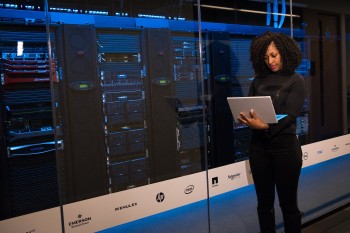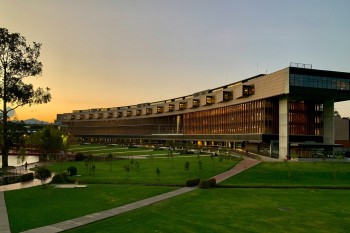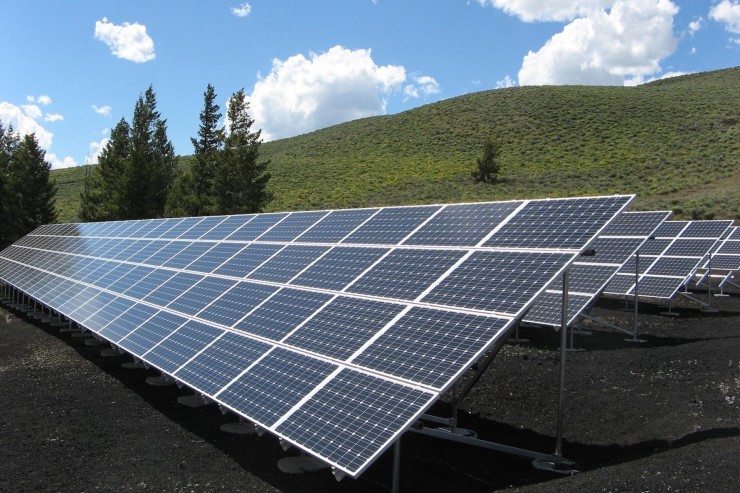- 2 years ago
- Infrastructure
- Description
- FAQ
- Updates
- Comments
Purpose, Mission, Goals
In the midst of environmental challenges and economic disparities, the Golf Living Foundation presents the "Green Homes, Bright Futures" initiative, a visionary endeavor that aims to redefine the essence of housing in rural and remote townships. As we embark on this journey, our vision is not only to build houses but to create homes that sustainable, affordable, and a committed to a brighter, eco-conscious future.
The central purpose of the "Green Homes, Bright Futures" campaign is to champion microgrid solutions for underserved and Indigenous communities, particularly in remote and islanded regions. This mission embodies a multi-faceted approach, including support for the daily energy demand of townships consisting of up to 2,000 households. Our primary objective is to promote microgrids as a core solution for enhancing the resilience and reliability of the energy distribution system.
The overarching goals of this campaign can be summarized as follows:
- Transformative Humanitarian Assistance: The project aspires to finance clean technology deployment in low-income and disadvantaged communities.
- Catalyzing Decarbonization: This initiative serves as a catalyst for decarbonization within the energy sector by actively promoting and implementing microgrid solutions. It leverages these solutions to aggregate a larger number of distributed energy resources, facilitating a significant reduction in greenhouse gas emissions.
- Championing Microgrid Solutions: A specific target is to reduce microgrid capital costs by 15% by 2031. Simultaneously, it aims to streamline project development, construction, and commissioning processes, leading to a 20% reduction in time.
- Empowering Low-Income Communities: The project extends its reach to low and moderate-income communities by expanding existing low-income solar programs. Through this, it empowers these communities to not only deploy but also benefit from zero-emission.
Governance and Leadership
The Project Steering Committee will develop a governance framework outlining decision-making processes, reporting structures, and the roles and responsibilities of its members.
Steering Committee: Composed of key project stakeholders, including representatives from indigenous communities, academia, and industry, responsible for decision-making and oversight.
Directors: Provide industry expertise, community engagement, and oversight.
Offering next-gen sustainable governance through responsible investing frameworks, transparent reporting and regulatory compliance, Project DARP - Decentralized Asset Responsibility Protocol - has been selected to support the functions of:
- Secretary: DARP's back-office autonomous agents will maintain project records and ensure regulatory compliance.
- Responsibility Board: DARP members will validate outcomes and issue IFGG coins rewards request. Coins can be used to purchase services on DARP.
- Advisory Council: DARP's experts in sustainability, electrical engineering, renewables, and indigenous community affairs will provide guidance and oversight.
- Controller: DARP's middle-office autonomous agents will be responsible for verifying portfolio assets, monitoring valuations and validating financial reporting.
Workforce Development
The initiative aims to create 25 employment opportunities, enhance skills, and improve the livelihoods of local communities. By promoting microgrid solutions, we anticipate the generation of jobs related to the design, construction, and maintenance of sustainable housing. The Program will prioritize qualified workers and graduates from marginalized and vulnerable groups including Indigenous, Hispanic, veterans and foster youth.
Allocation (USD)
- Solar Farm: $10,000,000
- Wind Turbine: $5,000,000
- Electricity Storage: $4,000,000
- Site Infrastructure and Grid Connection: $3,000,000
- Contingency and Miscellaneous: $2,000,000
- Community Engagement and Education: $500,000
- Other Operational Expenses: $1,250,000
- Administrative and Legal Expenses: $250,000
Targets and Milestones
General Outputs:
- Deployment of functional microgrid systems in remote and islanded regions.
- Meeting the daily energy demand of up to 2,000 households in underserved communities.
- Integration of a larger number of distributed energy resources into the national grid, supporting decarbonization efforts.
Projected Outcomes:
- Long-term employment opportunities and empowerment of residents through workforce development.
- Improved affordability and accessibility of sustainable energy solutions for underserved communities.
- Reduction of microgrid capital costs by 15% and decreased project development, construction, and commissioning times by 20%.
- Capacity building for community lenders serving underserved populations, fostering self-sufficiency and economic growth.
Enduring Impact:
- Significant improvement in the quality of life for underserved and Indigenous communities through sustainable and reliable energy access.
- Enhanced resilience of communities to climate change and future challenges.
- Contribution to a healthier environment for future generations through the reduction of greenhouse gas emissions.
- Transition of low-income and disadvantaged communities to sustainable and zero-emission technologies, contributing to the fight against climate change.
Comprehensive Reporting
Transparency and accountability are essential components of the "Green Homes, Bright Futures" campaign. To ensure that donors and the public are informed about the progress and impact of the campaign, comprehensive reporting mechanisms will be put in place. Regular reports will be made available to detail the allocation of funds, the status of microgrid projects, the outcomes achieved, and the impact on underserved communities. By providing this information, the campaign will build trust and encourage continued support for its noble mission.
Geography
Region: Global South
SUMMARY
This bold and transformative initiative will help to create sustainable, affordable, and resilient communities in rural and remote townships. It is rooted in a clear purpose, a visionary mission, and a set of ambitious goals that aim to reshape the housing landscape for the better. With a focus on workforce development and enduring impact, this campaign embodies a commitment to creating a brighter, eco-conscious future for underserved communities. Your support is not just a donation; it is an investment in a more sustainable and inclusive world. Together, we can build the foundation for brighter, greener, and more prosperous homes and futures.
About Golf Living Foundation
The Golf Living Foundation (GLF) is a non-profit organization dedicated to transforming golf facilities into inclusive community hubs that support youth development, senior engagement, and overall well-being, while promoting the values of discipline and sportsmanship through the sport of golf. With a mission to provide public and societal benefits through the lens of golf, GLF aims to create an enduring impact within remote and underserved communities by driving forward accessibility, inclusion and sustainability in the sport of golf.
General Questions
No Update Found
Related Causes

Raised: $0
Goal: $70,000,000
Advancing Technological Frontiers in Underserved Communities through Next-Gen Capabilities

Raised: $0
Goal: $112,000,000
Green Trade, Sustainable Infrastructure, and Empowerment: A Global Maritime Initiative

Raised: $12
Goal: $56,000,000
Empowering Communities: Building a Sustainable Resiliency Hub for Innovation and Education

